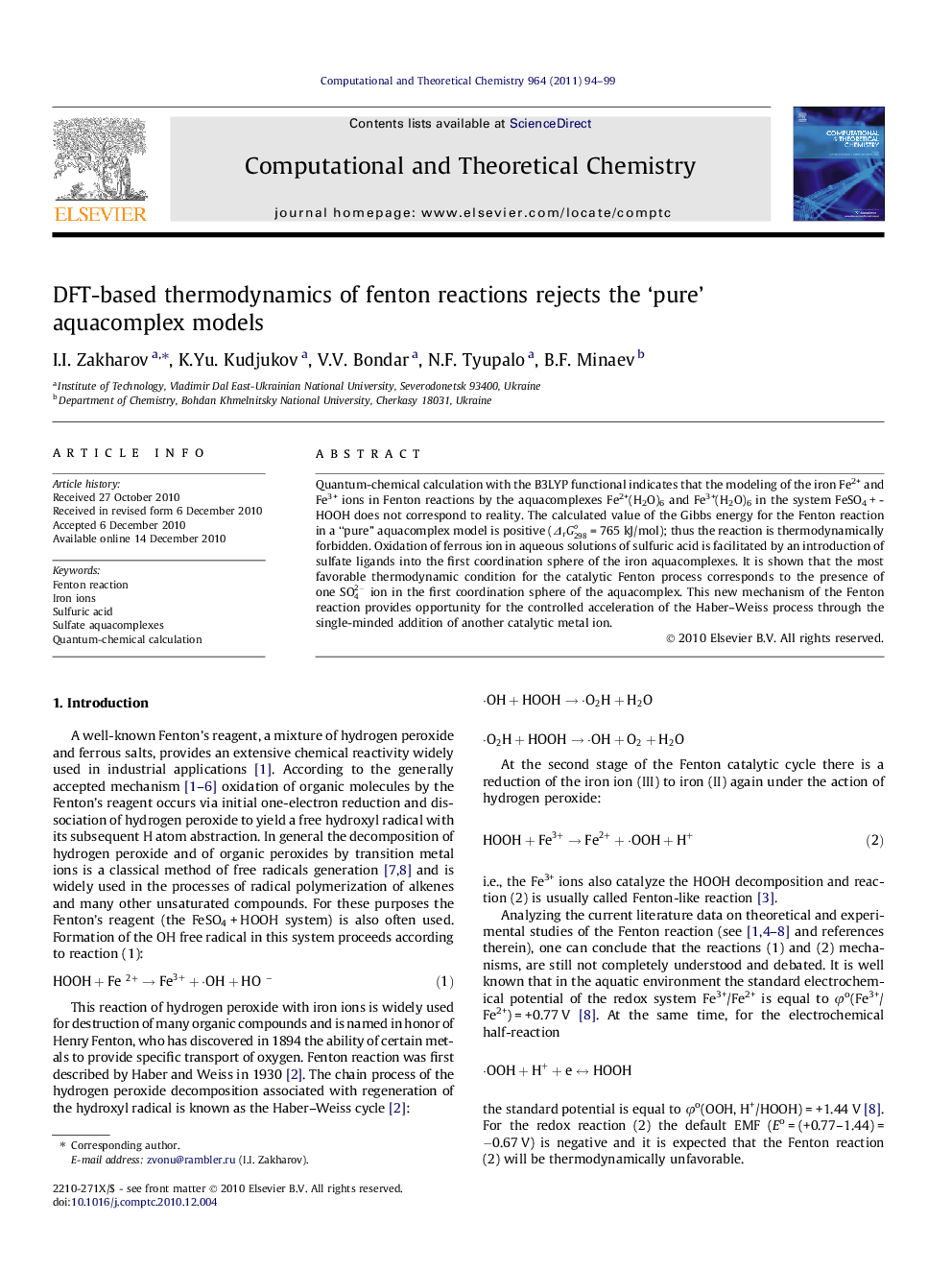| Article ID | Journal | Published Year | Pages | File Type |
|---|---|---|---|---|
| 5395309 | Computational and Theoretical Chemistry | 2011 | 6 Pages |
Abstract
Quantum-chemical calculation with the B3LYP functional indicates that the modeling of the iron Fe2+ and Fe3+ ions in Fenton reactions by the aquacomplexes Fe2+(H2O)6 and Fe3+(H2O)6 in the system FeSO4 + HOOH does not correspond to reality. The calculated value of the Gibbs energy for the Fenton reaction in a “pure” aquacomplex model is positive (ÎrG298o = 765 kJ/mol); thus the reaction is thermodynamically forbidden. Oxidation of ferrous ion in aqueous solutions of sulfuric acid is facilitated by an introduction of sulfate ligands into the first coordination sphere of the iron aquacomplexes. It is shown that the most favorable thermodynamic condition for the catalytic Fenton process corresponds to the presence of one SO42- ion in the first coordination sphere of the aquacomplex. This new mechanism of the Fenton reaction provides opportunity for the controlled acceleration of the Haber-Weiss process through the single-minded addition of another catalytic metal ion.
Related Topics
Physical Sciences and Engineering
Chemistry
Physical and Theoretical Chemistry
Authors
I.I. Zakharov, K.Yu. Kudjukov, V.V. Bondar, N.F. Tyupalo, B.F. Minaev,
